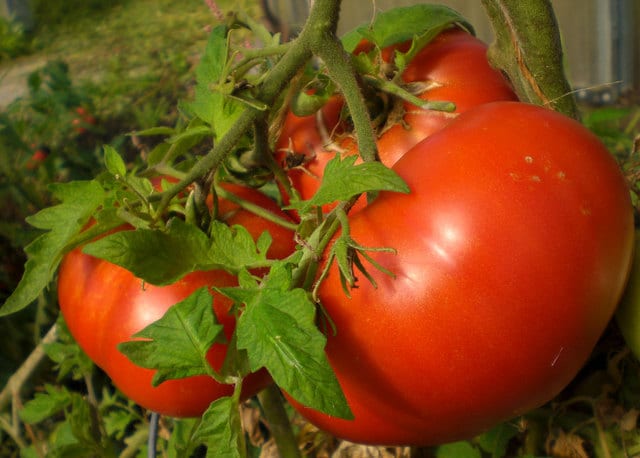When I was young and living in Fox Chase, a suburb of Philadelphia, our family of five would often pop into the green Rambler for a Saturday beach outing to Ocean City, N.J. Part of the ritual trip home was a stop at a roadside stand for Jersey beefsteak tomatoes. They are still some of the best I’ve ever tasted.
Now older and a bit wiser, I understand that even though we’re not Jersey farmers, we can still grow fine tomatoes in our own gardens. Or potatoes. Or whatever vegetables are our favorites.
It all begins with some important considerations, the most important being that a vegetable garden requires at least six to eight hours of direct sunlight daily. The choice of an appropriate location for your vegetable garden should be your first decision.
Next, consider how many people will be tending the garden. Will it be the entire family, or will you have to go it alone?
A single friend of mine lives by herself, but she still has a huge backyard vegetable garden. That is possible because she has enlisted a number of her good friends to help in every stage, from planting, to watering and weeding, to sharing the bumper crop. This is smart thinking. The number of worker bees can help to determine how large and varied your garden will be.
Also, consider what vegetables you and your family like to eat. Create a list of what you most like and what you least like so you can plan how many and which vegetables to plant. Obviously, you do not want to plant very many vegetables you are not likely to eat.
This reminds me of something former President George H. W. Bush famously said about one of his vegetable preferences. “I do not like broccoli,” he said, “And I haven’t liked broccoli since I was a little kid and my mother made me eat it. And I’m president of the United States and I’m not going to eat any more broccoli.”
You have to wonder if that despised broccoli was grown in the Bush family garden.
Finally, are you planning on a traditional garden with long single rows of vegetables spaced widely apart, or another option? And, what are some of the other options?
One is to have a raised bed garden. This is a garden that is above the soil level and higher than its surroundings. It can be made with or without a frame that can be homemade or purchased. Many gardeners like the idea of raised beds because the soil can be more easily adapted for the vegetables grown, and the bed can be at varying heights above the ground. This can be especially advantageous for those for whom kneeling might be an issue.
Many resources for this type of vegetable gardening (or any type for that matter) can be found on college extension service websites (Oregon State University Extension Service at extension.oregonstate.edu is a good one). They explain the advantages, fundamentals, safety issues, soil basics, step-by-step preparation and watering requirements for raised beds and their sites. Always make sure to take into account your particular growing zone.
Another option is to grow the vegetables in containers, which could be things like barrels, cut-off milk jugs, window boxes, baskets lined with plastic (with drainage holes punched in) or, of course, pots.
These containers could be placed on a sunny windowsill, balcony, patio or doorstep. They brighten up their surroundings, while also providing those tasty carrots, tomatoes, lettuce or other vegetable delights.
A third, more recently condoned option in the gardening world is to plant edible plants (vegetables or herbs) among your flowers (ornamentals) to add interesting scents, textures and colors. A friend recently sent me photos of beautiful kale thriving among her tulips. Filling in flower beds with such vegetables as rhubarb, asparagus or peppers can be beneficial because the flowers help attract more pollinators to the bed, which can, in turn, increase the vegetable yield. Of course, it is important to consider the overall look and to choose plants that share the same growing requirements.
Choose one (or more) of the vegetable-growing options available and immerse yourself. With further study, those New Jersey farmers will have nothing on you.



